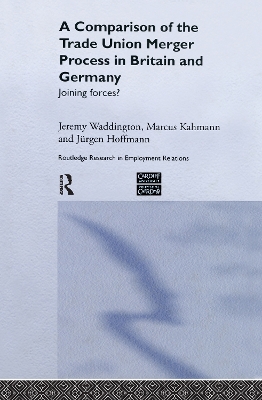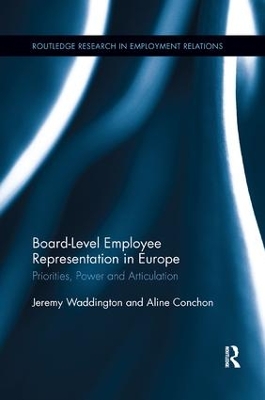Routledge Research in Employment Relations
3 total works
A Comparison of the Trade Union Merger Process in Britain and Germany
by Marcus Kahmann, Jeremy Waddington, and Jurgen Hoffman
Trade unions in Europe are currently facing a series of challenges that stem from changes to regulatory and production regimes implemented by the state and employers, in order to compete in an increasingly internationalized economy. In response to these challenges, trade union movements have been dramatically restructuring; long-standing principles of organization have been jettisoned in an attempt to develop new structures. Central to this process of structural adaptation are the mergers of trade unions.
This informative book focuses on the merger process in Britain and Germany and, uniquely, it reviews the wider implications of these developments - particularly for North America. As well as addressing the reasons for mergers, the book also examines the process whereby mergers are concluded, investigates the consequences, and analyses the costs and benefits of the post-merger organisation. Drawing on interviews conducted with senior policy-makers engaged in merger processes, this book explores the extent of internal union reform brought about by the merger process, and also identifies the implications of this reform for trade unions world-wide. Structured in distinct sections, this book covers topic such as:
- what distinguishes the British and German systems?
- trade union structures
- pre-merger issues settling the terms of the mergers
- post-merger developments.
This book forms part of the Routledge Research in Employment Relations series featuring works of high academic merit drawn from a wide range of academic studies in the social sciences. It is a valuable resource for postgraduate students studying business and management, industrial employee relations, and trade unions.
Board Level Employee Representation in Europe
by Jeremy Waddington and Aline Conchon
Board Level Employee Representation in Europe analyses the role, activities and networking of board level employee representatives in sixteen European countries and their counterparts operating in companies that have adopted European status. Board level employee representation is viewed as a key element of worker participation in Europe, but there has been only limited international comparative research that establishes what board level employee representatives do and how their activities vary between countries.
Based on a large-scale survey distributed to board level employee representatives (circa more than 4,000 respondents), this study identifies the personal characteristics and industrial location of board level employee representatives, what they do and how they interact with other parties within and outside of the company. This study fills in a knowledge gap at a time when policy debates are considering stakeholder models of corporate governance as a means on the way out of the crisis and the achievement of sustainable economies.
The book allows direct comparisons between clusters of countries for the first time, as the same survey instrument has been employed in all the participating countries. The research findings demonstrate a large variation in what constitutes board level employee representation in practice, including the relations between board level employee representatives and parties within and external to the company, and the pattern of influence of board level employee representatives on strategic company decision-making.
Aimed at practioners, researchers and policymakers alike, this book makes a vital contribution to the field, and will be the definitive work on board-level employee representation for the foreseeable future.
The creation of European Works Councils is arguably the most important measure taken in global industrial relations in recent years. Adopted with the primary goal of facilitating European-level workers’ participation in information-sharing and consultation in multinational companies, EWCs have also been central to a wide-ranging process of institution-building at the European level. European Works Councils charts the growth in the number of EWCs and the development of practices associated with EWCs between 1994, when legislation on EWCs was adopted, and 2009, when the initial legislation was amended. Drawing on original, large-scale, survey data, the book shows that the quality of information and consultation is generally poor, thus bringing into question the soft touch legislative approach to employee participation of the European Commission.
The reforms implemented within trade union organizations to accommodate the development of EWCs are explored, together with the initiatives taken to extend the role of EWCs beyond information and consultation to incorporate negotiation. Articulation between EWCs and trade union organizations is shown to be integral to EWCs as institutions of information and consultation, and as a means to influence managerial decision-making. Similarly, the development of EWCs is shown to be a process contested by employers’ organizations and managers on the one hand and labour organizations on the other. The character of this contestation ensures that the category ‘EWC’ includes a wide range of institutional forms and practices.


